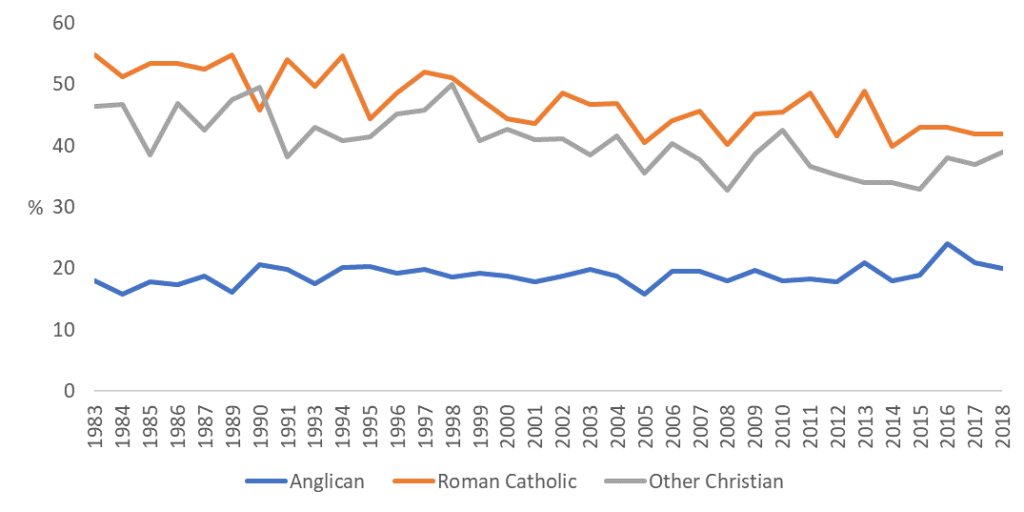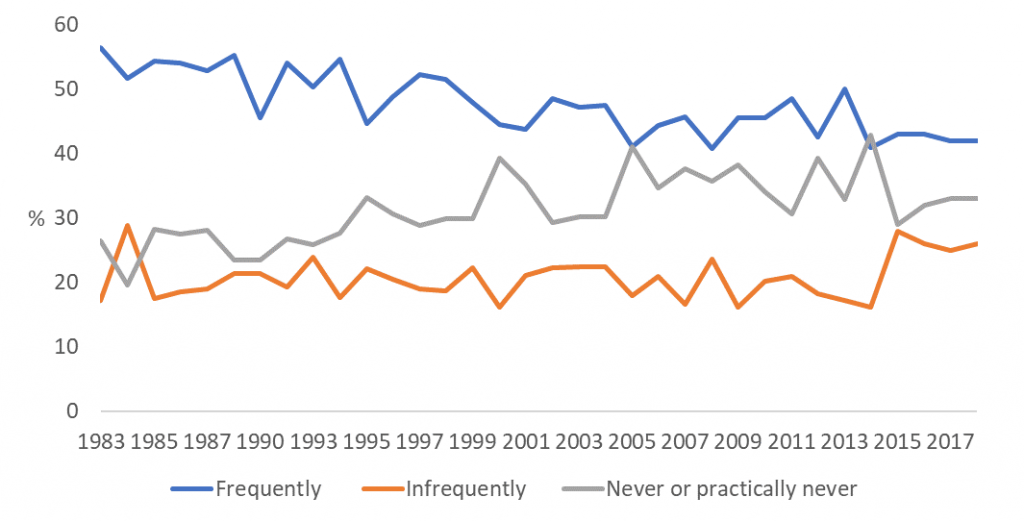Attendance is a common indicator of what sociologists of religion term ‘behaving’, often analysed alongside religious ‘belonging’ and ‘believing’. Attendance data based on sample surveys need to be treated with caution given well-established concerns over the ‘aspirational’ reporting of attendance by respondents, involving exaggeration of how often they actually visit places of worship. However, focusing on Catholic subsamples from recurrent surveys of the general adult population in Britain data provides useful evidence on broad shifts in attendance patterns, as well as enabling comparisons with other religious traditions. The data reported here involves analysis of the British Social Attitudes surveys and British Election Study surveys. What can the data from these surveys tell us, if anything, about Catholics’ long-term attendance at religious services?
Religious attendance in the BSA (every survey between 1983 and 2018) and BES (most surveys between 1983 and 2017) has been gauged using the following standard question: ‘Apart from such special occasions as weddings, funerals and baptisms, how often nowadays do you attend services or meetings connected with your religion?’ For clarity of presentation, the full set of response options has been collapsed into three groups: attends frequently (defined as once a month or more); attends infrequently (less often); and never attends.
Firstly, let’s compare Catholics’ levels of church attendance with those of Anglicans and other Christians. Figure 1 charts the proportions within each group saying they attend church regularly (that is, at least on a monthly basis), based on the BSA surveys. The consistent feature is for regular church attendance to be more much widespread amongst Catholics and other Christians compared to Anglicans. Generally, attending on a monthly basis (or more often) has been reported by around a fifth of Anglicans over recent decades, while it has averaged approximately half of Catholics and two-fifths of other Christians. The trend seems to be for regular attendance at church services to have declined over time for Catholics and other Christians.
Figure 2 shows the same pattern, based on data from various BES surveys (between 1983 and 1997 and from 2015-2017). A similar pattern is evident: across recent decades, regular attendance has been much more prevalent amongst Catholics and other Christians than it has amongst Anglicans.

Figure 1 Percentage attending religious services monthly or more often, 1983-2018 (BSA surveys)

How have Catholics’ attendance patterns changed over time? Figure 3 (BSA surveys) and Figure 4 (BES surveys) show data on attendance for Catholics only, split into the three attendance categories noted already. The trends from the BSA indicate a decrease in frequent attendance over time and a rise in infrequent attendance (that is, less than once a month), while the BES data also show a decrease in frequent attendance relative to the other categories.


Note: we will be posting findings soon from the new survey of Catholic adults in Britain.